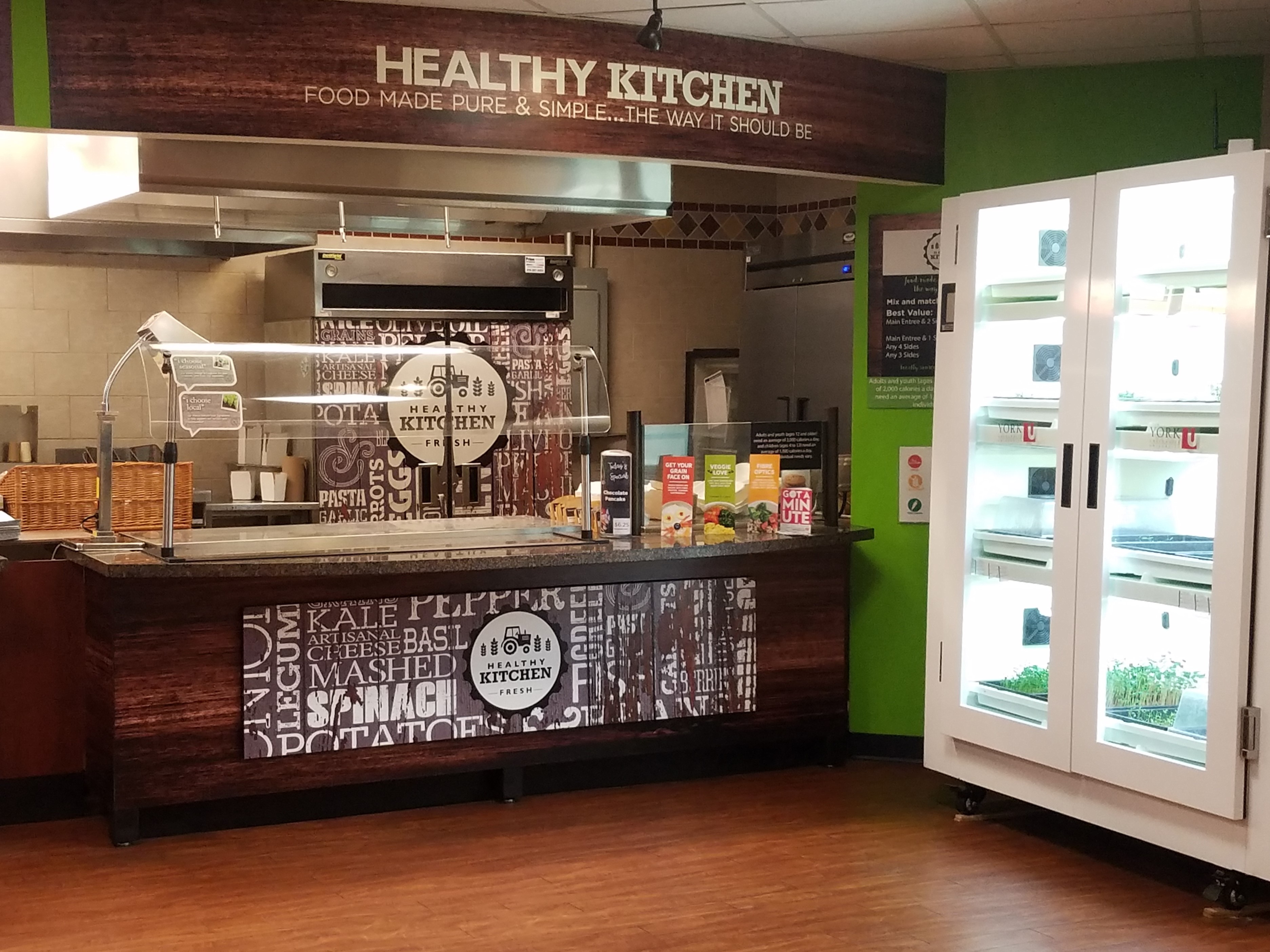Nobody entered the Foodservice Energy Challenge with a résumé like York University
Over the past decade, York University has invested in programming that’s led to significant achievements in a number of key areas, including energy conservation, waste management, food and transportation. This eco-conscious commitment first took shape in 2008 with the formation of the President’s Sustainability Council, an advisory body tasked with providing input and recommendations on how to advance the University’s sustainability initiatives, projects and practices.
Its goal? To foster the integration of knowledge and issues about sustainability into research, education and application. And from that point forward, Canada’s third-largest institution for higher education — with a community of 53,000 students and 7,000 faculty and staff — embarked on a series of environmentally friendly initiatives.
The creation of multiple green roofs? Check. The use of PV solar panels? Check. The collection of rainwater? Check. The construction of the LEED Gold certified Bergeron Centre for Engineering Excellence, three more LEED certified buildings and more? Check, check and check.
By the end of 2017, York University had reduced energy use by about 30 per cent, while successfully diverting 68 per cent of waste from landfills and reducing the use of single-occupant vehicles on campus from 70 per cent to 20 per cent. In 2018, it was named one of Canada’s Greenest Employers for the sixth consecutive year.
Having notched so many sustainable benchmarks already, the University decided it was time to take a more concerted crack at foodservice operations at their largest kitchen facility: Stong Dining Hall, which supports both residence dining and on-campus catering services.

“Universities and colleges have been leaders in sustainability within foodservice,” reckons Anthony Barbisan, York University’s Executive Director of Ancillary Services. “Reducing energy consumption in our own foodservice operations contributes to us reducing our carbon footprint as a whole.”
According to him, more than 135,000 customers are served at Stong during the fall and winter terms, an average of 1,114 per day. The Stong kitchen also provides a great deal of catering on campus, with more than 2,000 orders a year. As such, Barbisan says Stong Dining Hall represents a major opportunity for York University to realize energy savings, improve the work space for its kitchen staff and better serve its students, while reducing the University’s overall impact on the environment.

Taking the lead on sustainability to help the foodservice industry save energy and money, Restaurants Canada recently partnered with Save on Energy, ENERGY STAR, Enbridge, LEAF, Russell Hendrix, Silver Chef and NewSpring Energy to throw down the gauntlet with the Foodservice Energy Challenge.
Foodservice operators were invited to sign up and take advantage of money-saving energy tips, incentives and rebates, while upgrading to new, modern, high-efficiency equipment that can reap significant performance and energy benefits
Participants would further learn about how small and big changes can have a positive impact on their business. They’d even get a free audit to determine energy saving opportunities within their business, on top of support from their local electric and gas utility companies to assist with eligible savings programs.
York University didn’t hesitate to enroll. And in response to findings of the free audit specifically, the University will be installing a range of ENERGY STAR equipment, plus Demand Control Kitchen Ventilation fans. ENERGY STAR, of course, is the mark of high-efficiency products in Canada. Think the best energy performers on the market. DCKV systems similarly determine the minimum amount of exhaust air required to capture and contain effluent from the cook line.

This doesn’t just improve the efficiency of Stong Hall’s HVAC system, but contributes to a better environment for staff and students. “We’ve also installed wireless temperature sensors in refrigerators and freezers,” Barbisan notes, “not only to help us monitor critical temperature points, but to optimize our temperature set-points to minimize energy consumption.”
Thanks to these strategic measures — and more to come — York University anticipates savings of approximately $20,000 per year. This is based on the Foodservice Energy Challenge’s aforementioned audit. Where it pertains to total potential energy savings, the assessment identified an internal rate of return of 3 per cent over five years, 17 per cent over ten years and 21 per cent over 15 years.
As for how these savings will improve business in terms of profits, public relations and engagement, Barbisan claims they drop directly to the bottom line, enabling the University to reinvest those funds to enhance service for its students.
He adds that York University is already quite pleased and looking forward to continued benefits. “Having the expertise available to conduct the analysis on heating and cooling costs has been fantastic, as those recommendations will likely have the biggest single impact. Even small, inexpensive changes, including things like procedures and training, can provide results and very short payback periods.”











Fantastic post but I was wondering if you could write a litte more on this subject?
I’d be very grateful if you could elaborate a little bit further.
Appreciate it!
Happy you liked the article! If you are interested in this topic, there will be many seminars and talks happening at the RC Show that will delve deeper into techniques and programs to help operators reduce energy, water and waste. There’s a full schedule posted on RCshow.com
Hi to every one, because I am truly keen of reading this web site’s post to be updated regularly.
It includes nice material.